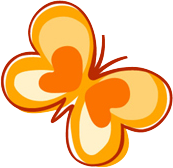Artificial Grass: A Comprehensive Overview
페이지 정보

본문
Artificial grass, also known as synthetic turf or fake grass, has evolved significantly since its initial introduction in the 1960s. Once a novelty item primarily used in sports stadiums, it has become a viable and increasingly popular landscaping option for residential and commercial properties. This report provides a comprehensive overview of artificial grass, covering its history, manufacturing processes, types, benefits, drawbacks, installation, maintenance, and environmental considerations.
History and Evolution:
The genesis of artificial grass can be traced back to the desire for a durable, low-maintenance playing surface. The first major application was in 1965 at the Astrodome in Houston, Texas. The original product, known as Chemgrass, was made of nylon fibers. While groundbreaking, it was relatively crude compared to today's iterations. Over the decades, advancements in materials science and manufacturing techniques have led to significant improvements in the appearance, feel, and durability of artificial grass. Polypropylene, polyethylene, and polyurethane have become common materials, each offering unique properties. The development of infill materials, such as sand, rubber crumb, and specialized granules, has further enhanced performance and aesthetics.
Manufacturing Process:
The manufacturing of artificial grass is a multi-step process. If you have any thoughts about exactly where and how to use fake grass mat reject shop, you can get hold of us at the web site. It typically begins with the extrusion of plastic fibers, which are then textured to mimic the look and feel of natural grass. These fibers are then tufted or woven into a backing material, usually made of polypropylene. The tufting process involves inserting the fibers through the backing fabric using needles. The fibers are then secured in place, often with a coating of latex or polyurethane.
Next, the infill material is applied. Infill is a crucial component, providing ballast, cushioning, and support for the fibers. It also helps to keep the blades upright and protect the backing from UV damage. Common infill materials include:
Sand: Provides stability and drainage.
Rubber crumb: Made from recycled tires, it offers cushioning and shock absorption.
Silica sand: A fine-grained sand that provides weight and stability.
Specialized granules: These can be made from various materials, including cork, coconut fibers, and even plant-based materials, offering specific performance characteristics like improved drainage or reduced heat retention.
Finally, the finished product undergoes quality control checks to ensure consistency in appearance, density, and durability.
Types of Artificial Grass:
Artificial grass comes in a variety of types, each designed for specific applications and preferences:
Pile Height: The length of the grass blades. Shorter pile heights (e.g., 1 inch or less) are often preferred for sports fields, while longer pile heights (e.g., 1.5 inches or more) are common for residential lawns.
Fiber Shape: The shape of the individual grass blades. Options include:
Monofilament: Single, straight blades that offer a realistic appearance.
Fibrillated: Blades that are slit or split, creating a wider surface area and improved durability.
Curved: Blades that are designed to mimic the natural curvature of grass blades.
Fiber Material: The type of plastic used to create the fibers. Polyethylene is generally considered the most realistic and durable, while polypropylene is more affordable.
Infill Type: The type of material used to fill the space between the grass blades. This can significantly impact the performance and feel of the turf.
Benefits of Artificial Grass:
Artificial grass offers numerous advantages over natural grass, including:
Low Maintenance: Requires no mowing, watering, fertilizing, or pesticides, saving time, money, and water.
Durability: Resistant to wear and tear, making it ideal for high-traffic areas and playgrounds.
Aesthetics: Provides a consistently green and attractive lawn year-round.
Water Conservation: Reduces water consumption, contributing to environmental sustainability.
Allergy-Friendly: Reduces exposure to pollen and other allergens.
Pet-Friendly: Easy to clean and resistant to pet waste.
Versatility: Can be installed in a variety of locations, including lawns, patios, balconies, and rooftops.
Improved Drainage: Modern artificial grass systems often incorporate drainage systems, preventing waterlogging.
Long Lifespan: High-quality artificial grass can last for 10-20 years or more with proper care.
Drawbacks of Artificial Grass:
Despite its many benefits, artificial grass also has some drawbacks:
Initial Cost: The upfront cost of artificial grass is typically higher than that of natural grass.
Heat Retention: Can become hot in direct sunlight, potentially making it uncomfortable to walk on barefoot.
Environmental Concerns: Concerns exist regarding the use of plastic and the potential for microplastic runoff.
Installation: Requires professional installation for optimal performance and longevity.
Infill Maintenance: Requires periodic maintenance, such as brushing and infill replenishment.
Not Biodegradable: Artificial grass is not biodegradable and will eventually need to be disposed of.
Potential for Odor: Can trap odors if not properly cleaned, especially in areas frequented by pets.
Installation:
Proper installation is crucial for the performance and longevity of artificial grass. The installation process typically involves:
- Site Preparation: Removing existing grass, leveling the ground, and ensuring proper drainage.
- Base Layer: Installing a base layer of crushed stone or gravel to provide a stable foundation.
- Weed Barrier: Laying down a weed barrier to prevent weeds from growing through the turf.
- Turf Installation: Unrolling and securing the artificial grass panels.
- Seaming: Joining the panels together using seaming tape and adhesive.
- Infill Application: Spreading and brushing in the infill material.
Maintenance:
While artificial grass requires less maintenance than natural grass, some care is still needed to keep it looking its best:
Brushing: Regular brushing helps to keep the blades upright and remove debris.
Cleaning: Removing leaves, twigs, and other debris with a broom, leaf blower, or vacuum.
Spot Cleaning: Cleaning up spills and pet waste with water and mild soap.
Infill Maintenance: Replenishing infill as needed and addressing any drainage issues.
Preventative Measures: Avoiding the use of harsh chemicals and protecting the turf from direct heat sources.
Environmental Considerations:
The environmental impact of artificial grass is a complex issue. While it reduces water consumption and eliminates the need for pesticides and fertilizers, it also involves the use of plastic, which can contribute to pollution. The manufacturing process can also have environmental impacts.
However, advancements in materials and manufacturing are leading to more sustainable options. Some manufacturers are using recycled materials, plant-based fibers, and more environmentally friendly infill materials. The long lifespan of artificial grass can also offset some of its environmental impact, as it reduces the need for frequent replacement.
Conclusion:
Artificial grass has become a popular and practical landscaping alternative. While it has some drawbacks, its benefits, including low maintenance, durability, and water conservation, make it an attractive option for many homeowners and businesses. As technology continues to advance, artificial grass is likely to become even more realistic, sustainable, and widely adopted in the years to come. Careful consideration of the specific needs and circumstances, including budget, climate, and intended use, is essential when deciding whether artificial grass is the right choice.
- 이전글The Green Revolution: Understanding Artificial Grass 25.07.13
- 다음글Casino Tipping Etiquette: When and How Much Should You Tip? 25.07.13
댓글목록
등록된 댓글이 없습니다.








